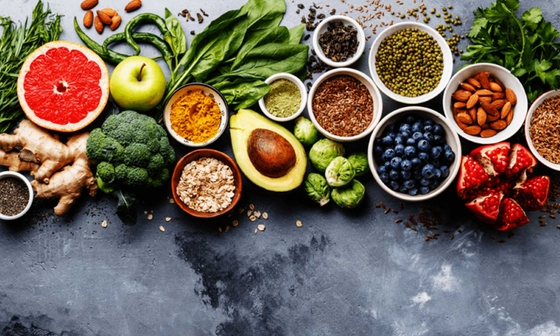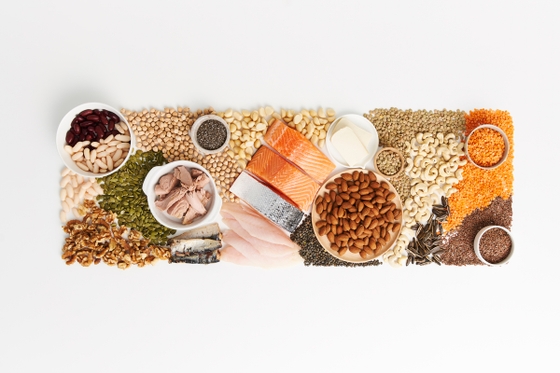
Fruit, vegetables and heart health
How to boost your fruit and vegetable intake to help protect your heart.
Key takeaways
- Fruit and vegetables can help lower your risk of heart disease, stroke, type 2 diabetes and some cancers.
- Eating fruit and vegetables can also help manage cholesterol levels and weight.
- Less than 10 per cent of Australians eat the recommended amount of fruit and vegetables.
- Try to make fruit or vegetables a part of every meal. Variety is key.
Naturally colourful and tasty, eating plenty of fruit and vegetables can help keep you healthy and lower your risk of heart disease.
That’s not all. Fruit and vegetables can help to protect against type 2 diabetes and some cancers. They can also help to manage cholesterol levels and weight.
Most Australians don’t eat enough fruit and vegetables.1
How many servings of fruit and vegetables should you eat a day?
Part of a heart-healthy diet involves eating a wide variety of foods. The more colour, the better. Focus on including as much fresh and unprocessed food as possible.
For good health, you should try to eat at least five serves of vegetables and two serves of fruit every day.2
Children, pregnant women or breastfeeding mothers may need more or less. For more information on what's right for you, visit the Australian Dietary Guidelines or talk to an Accredited Practising Dietitian.
How much is a serving of fruit and vegetables?
Fruit
- 1 medium apple, banana, orange or pear
- 2 small apricots, plums, kiwi fruit
- 1 cup of diced/canned fruit (no syrup)
- ½ cup (125 ml) juice (drink only occasionally)
- 30 g (small handful) of dried fruit (eat only occasionally).
Vegetables
- ½ cup of cooked vegetables
- 1 cup of raw or salad vegetables
- ½ cup of sweetcorn
- ½ medium potato, sweet potato, and other starchy vegetables
- ½ cup of cooked peas, beans or lentils.
How to add more fruit and vegetables to your diet
Adding more fruit and vegetables to your diet is easy. Here are a few tips to get you started.
Eat fresh, frozen, canned and dried fruit and vegetables
While fresh is often considered best, frozen and canned vegetables can be just as healthy. They all count. Always read the nutrition information panel on the food label to avoid added salt and sugar.
Plan your main meal around vegetables
Add an extra serve of vegetables or a side salad to each main meal. Swap some of the meat and poultry in recipes with legumes (beans, peas or lentils).
Chop it!
Cut up fruit and vegetables in the morning. Just because it’s healthy doesn’t mean it can’t be fun; cutting up fruit and vegetables into bite-sized pieces can save the hassle later and it makes it easier to transport. Make sure to store them in an air-tight container in the fridge for when you get hungry between meals.
Add salad to your wholegrain sandwich
Try adding lettuce, tomato, carrot and tomato for a healthy boost. Spinach leaves, tomato and finely cut up onion and mushrooms work well in a toasted sandwich. Yum!
Eat seasonally
Fruit and vegetables that are in season are often fresher and cheaper.
Fill half of your plate
Eat the rainbow – add three different-coloured vegetables as part of your dinner.
Sprinkle fruit on your breakfast
Add chopped fresh or frozen fruit to your cereal or porridge to not only make it healthier, but also more flavoursome.
Order a side
Eating out and eating healthy are not mutually exclusive. Ordering vegetable-based pasta sauces, vegetable toppings for pizzas or a stir-fry is an easy way to add vegetables to your meal. You can also order side-salad or vegetables with your meal, the more greens the better.
Try fruit as a snack
Rather than reaching for a bag of chips or chocolate bar, try to eat more fresh or frozen berries, which go well with unflavoured yoghurt.
Work in more
Add fresh or frozen vegetables and legumes to your pasta dishes, soups or casseroles. Try adding grated vegetables, such as carrot or zucchini to sauces.
Have fun with it
Find fun ways to cook and serve vegetables and fruits to help you eat enough.
It may take some practise, but eating a range of these healthy foods can become second nature.
Eat the rainbow: Add colour and variety to your meals
Eating different types of fruit and vegetables each day helps you get enough fibre, vitamins, and minerals. Different colours offer different healthy nutrients and help your body to function at its best.
Each week, try to include fruit and vegetables from all of different colour groups.
Oranges and yellows
- Corn
- Mandarins
- Nectarines
- Capsicum
- Carrot
- Pumpkin
- Sweet Potato
- Oranges
- Bananas
Red
- Tomato
- Capsicum
- Strawberries
- Raspberries
- Apples
Purple and blue
- Eggplant
- Plums
- Blueberries
- Beetroot
Green
- Peas
- Cucumber
- Grapes
- Apples
- Kiwi fruit
- Lettuce
- Baby spinach
- Beans
- Broccoli
Brown and white
- Potato
- Cauliflower
- Cabbage
- Mushroom
- Onion
You might also be interested in...

How to follow a heart healthy eating pattern
Follow these easy tips to boost your heart health and embrace a heart-healthy eating pattern.

Protein and heart health
Healthy proteins can part of a heart-healthy diet. However, each can impact your risk of heart disease differently. Find out more the best food protein sources.

Dairy and your heart health
Not all dairy products are equal. Discover different types of dairy foods and their impact on heart health.
Last updated26 August 2024
Last reviewed26 August 2024